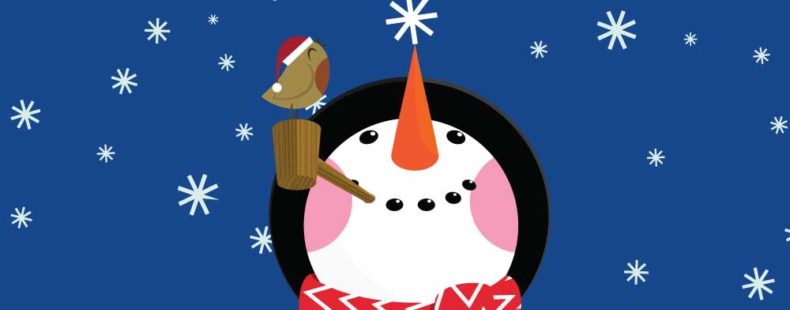It’s the holiday season—there’s more downtime than usual and the winter weather keeps most of us from spending too much time outside. So it’s obviously a great time to work on analytical and writing skills in a fun and engaging way. Come on, you know that sounds fun! Wait, just hear us out …
There are any number of familiar characters in the holiday stories, from Ebenezer Scrooge to Judah Maccabee to Santa Claus himself. One way to teach kids more about these famous characters, and build their analytical and vocabulary skills in the process, is to have them think about how to create detailed descriptions of these characters.
Building descriptive vocabulary requires a base of known words and a slow development of new, more difficult ones in their vocabulary. Hint, hint: the thesaurus can be helpful here.
While you’re working on that development, here are some steps to get your kids thinking and describing.
Step 1: pick a character
We are going to start with Santa Claus, because it is a holiday activity, after all. Other examples could include:
- Rudolph
- Frosty
- Mrs. Claus
- Buddy the Elf
- The Grinch
- The Whos in Whoville
**See the end of this article for more examples of characters and the vocabulary that describes them!**
Step 2: ask questions
The real starting point for being able to describe characters is asking the right questions: What do they look like? Sound like? Taste like? OK, taste isn’t really all that helpful in character description, so maybe consider a different perception: what is their personality like? How do they act?
These are the types of dimensions we are going to start with for the following example Santa character description.
What does Santa Claus …
Step 3: include more synonyms
Using a thesaurus or a word bank to encourage kids to replace each original word with a synonym or related word (especially one they aren’t that familiar with) is vocabulary building 101.
For our Santa example below, the original word is italicized in parentheses after the new synonym.
What does Santa Claus …
- look like? rotund (round), bearded (hairy), rosy (red)
- sound like? boisterous (loud), chuckling (laughing)
- act like? jovial (merry), cordial (nice), jubilant (happy)
Step 4: write a description of the character using your new vocabulary
An important step in learning new vocabulary is to practice using it. Using the new words within a narrative is a great way to understand how these words work. Here are two options:
- The slightly easier method: encourage kids to write a short description of the character using the original vocabulary list. Then, they can replace the original words with the synonyms they found.
- The slightly harder method: have them write a short description of the character using only the new vocabulary.
In both cases, you can use the descriptive paragraph as a starting point for a longer story about the character. If they’re creating a longer story, encourage them to use the new vocabulary words an additional time, to really let the words sink in their brains.
Using our new vocabulary words, here’s what we have to say about Santa Claus:
When Santa Claus came to town, we saw him on his sleigh. He had a rosy, bearded face and a rotund body. When he landed, he chuckled boisterously. He greeted us jovially and seemed very cordial and jubilant.
This short exercise is a lot of fun (we recommend you try it yourself).
And because it was so fun … we couldn’t stop ourselves. Below are some more examples of the kind of vocabulary you can encourage kids to use for some other notable characters from the holiday season.
Elf (on the Shelf):
- look like: diminutive (small), lanky (skinny)
- sound like: falsetto (squeaky)
- act like: supportive (helpful), affable (friendly)
Mrs. Claus:
- look like: plump (round), beaming (smiling)
- sound like: resounding (loud), good-natured (cheerful)
- act like: lively (happy), watchful (careful)
Ebenezer Scrooge:
- look like: cantankerous (grumpy), hoary (white hair), sullen (long-faced)
- sound like: grouse (mutters)
- act like: mingy (cheap), wrathful (angry)
The Grinch:
- look like: verdant (green), shaggy (furry), outlandish (strange)
- sound like: fractious (whiny), surly (gruff)
- act like: reclusive (lonely), crotchety (grumpy)
Rudolph:
- look like: novel (unique), sanguine (red)
- sound like: guileless (childlike), soprano (high voice)
- act like: inquisitive (curious)
Judah Maccabee:
- look like: tenacious (strong), resilient (tough)
- sound like: thundering (loud)
- act like: gallant (brave)









